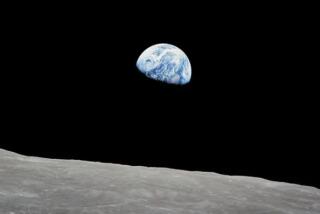Developments in Brief : Geologist Advances Earth Core Theory
- Share via
About 2.5 billion years ago, the Earth’s magnetic field suddenly grew stronger, suggesting that the planet’s solid core formed in that period, a geologist believes.
Christopher J. Hale from McMaster University in Hamilton, Canada, calls the time period “the greatest event in geological history” and said last week that it also marked the start of continental drift.
“Something major happened between 2.7 and 2.5 billion years ago,” he said of Earth, which most scholars believe first formed 4.5 billion years ago.
The Earth is made up of an outer crust and a fairly firm mantle underneath. But its core is of molten metal, with a smaller solid mass somewhere in the middle.
Several years ago, researchers suggested that this solid inner core was formed when Earth began to cool. The drop in temperatures caused some of the molten liquid to crystallize and form a ball.
Earth’s magnetic field, which is a constant flow of electrically charged particles, is believed to be caused by the molten liquid sloshing around the inner core.
Hale said the formation of a solid core would increase the velocity of liquid around it. This would explain the dramatic and, for geologists, sudden increase in the magnetic field 2.5 billion years ago.
“The field was very weak, only one-third of what it is today,” Hale said. “Then it increased sharply and finally leveled off to what it is today. It has been fairly stable.”
Hale said he developed his theory, published in the British science journal Nature, after cataloguing minute molecular changes in 3.5-billion-year-old rocks from South Africa. “It’s a suggestion, a possibility,” he said. “Our knowledge of Earth’s history is very sketchy. But it does fit together.”





